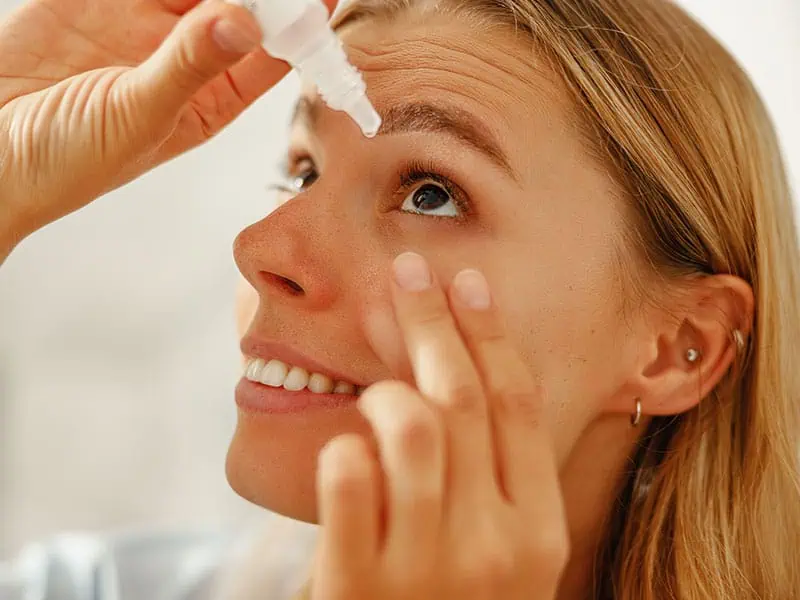
Issue 9/2024
Nikolova, N., Grupcheva, L., Grupcheva, H.
Dry eye syndrome is a multifactorial disease of the tear film and the anterior ocular surface caused by endogenous and exogenous factors. Among the usual patient complaints are gritty feeling, burning, dryness, irritation, discomfort and blurred vision. Assessing symptoms is key to identify the dry eye diagnosis. Many questionnaires have been developed for this purpose. Ocular Surface Disease Index questionnaire (OSDI) is one of the fastest and most frequently used in the ophthalmic practice. The approach for patients with dry eye can be different – from change in lifestyle, avoiding factors and activities that aggravate the condition, use of moisturizing drops and gels to punctal occlusion and others. A large number of patients respond well to the applied standard conservative therapy, but in others – in which the changes are more severe, the therapy alone isn›t enough – they are in need of more complete tear film substitutes, namely – autologous serum drops.
Objective: The aim of the study was to evaluate the impact of autologous serum drops (ASD) on the clinical outcomes after treatment of severe dry eye syndrome.
Material and methods: An interventional, non-randomized, comparative study was conducted over a period of 8 weeks in SBOBAL-Varna. 30 patients with a moderate or severe form of dry syndrome were divided into two equal groups, treated respectively with standard moisturizing therapy and with 100% ASA, 4 times a day in monotherapy mode. Main outcome measures were OSDI, Schirmer test and tear film breakup time (TBUT), fluorescein staining (Efron scale) and degree of injection (Efron scale). Outcomes were compared at baseline, 4 weeks and 8 weeks after treatment. The estimated effects of ASA were expressed as a ratio with a 95% confidence interval.
Results: For a period of 8 weeks 30 patients with a diagnosis of Dry Eye Syndrome were examined – 17 women and 13 men with an average age of 48 years. Fifteen of them were given standard therapy including artificial tears (Thealoz duo coll) and another 15 – autologous serum drops. All subjects were surveyed and assessed with the OSDI questionnaire and their tear film was tested using Schirmer and TBUT. After 4 weeks of their assigned therapy, the tests were repeated and the results compared. Follow-up results showed that the OSDI after treatment with serum drops was lower than that after treatment with standard moisturizing therapy: the mean difference (MD) was -9.89 points. No difference was found in the Schirmer test after treatment between the two groups MD is of 1.52 mm. The TBUT of the serum drop group was longer than that of the artificial tear group with an MD of 5.3 s.
Conclusion: Serum drops can be an effective treatment for Dry Eye Syndrome, improving OSDI and TBUT – subjective and objective factors for patients.
Аddress for correspondation:
Dr. Neli Nikolova
USBOBAL – Varna
15 „Doyran”, Str.
9002, Varna
